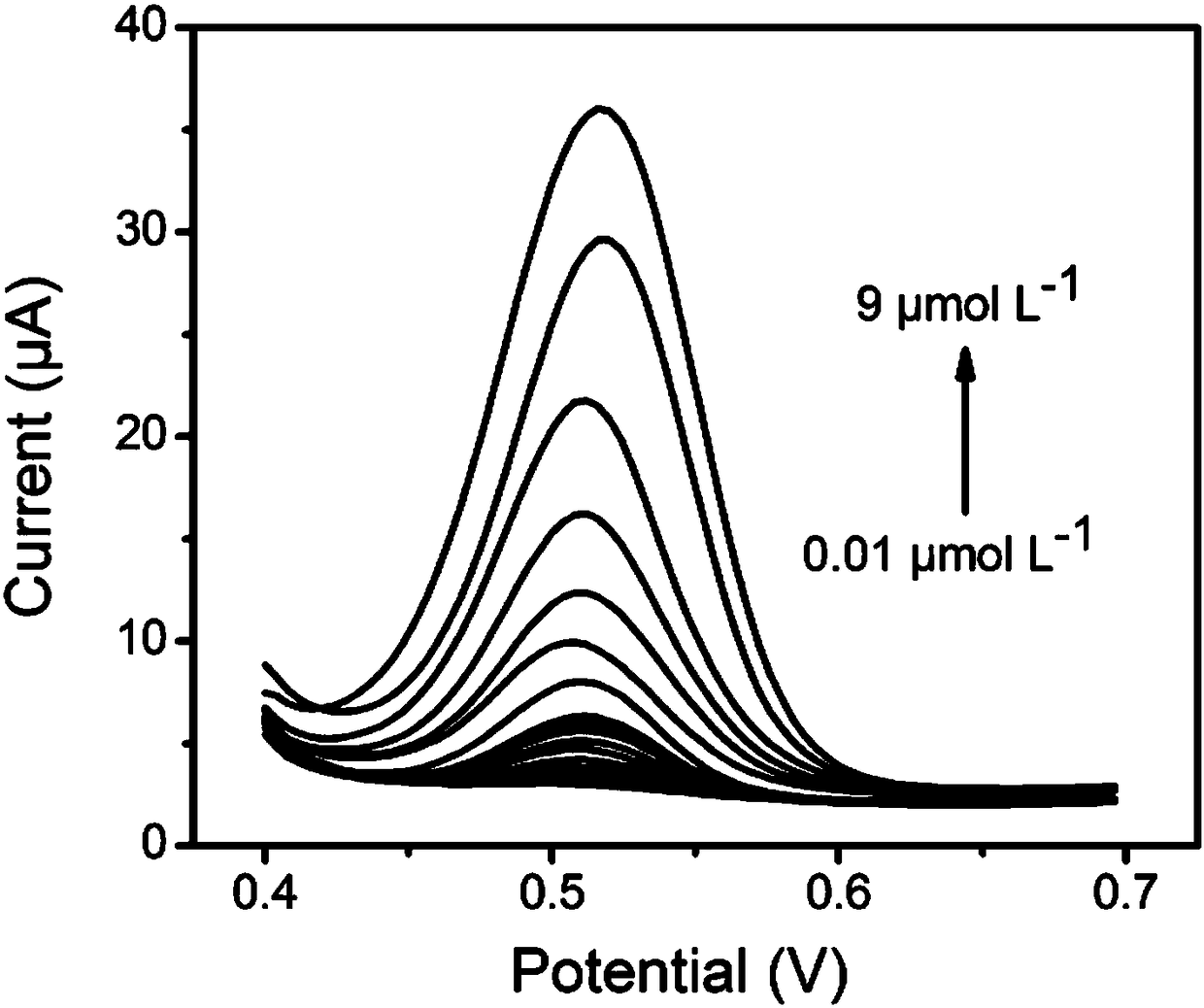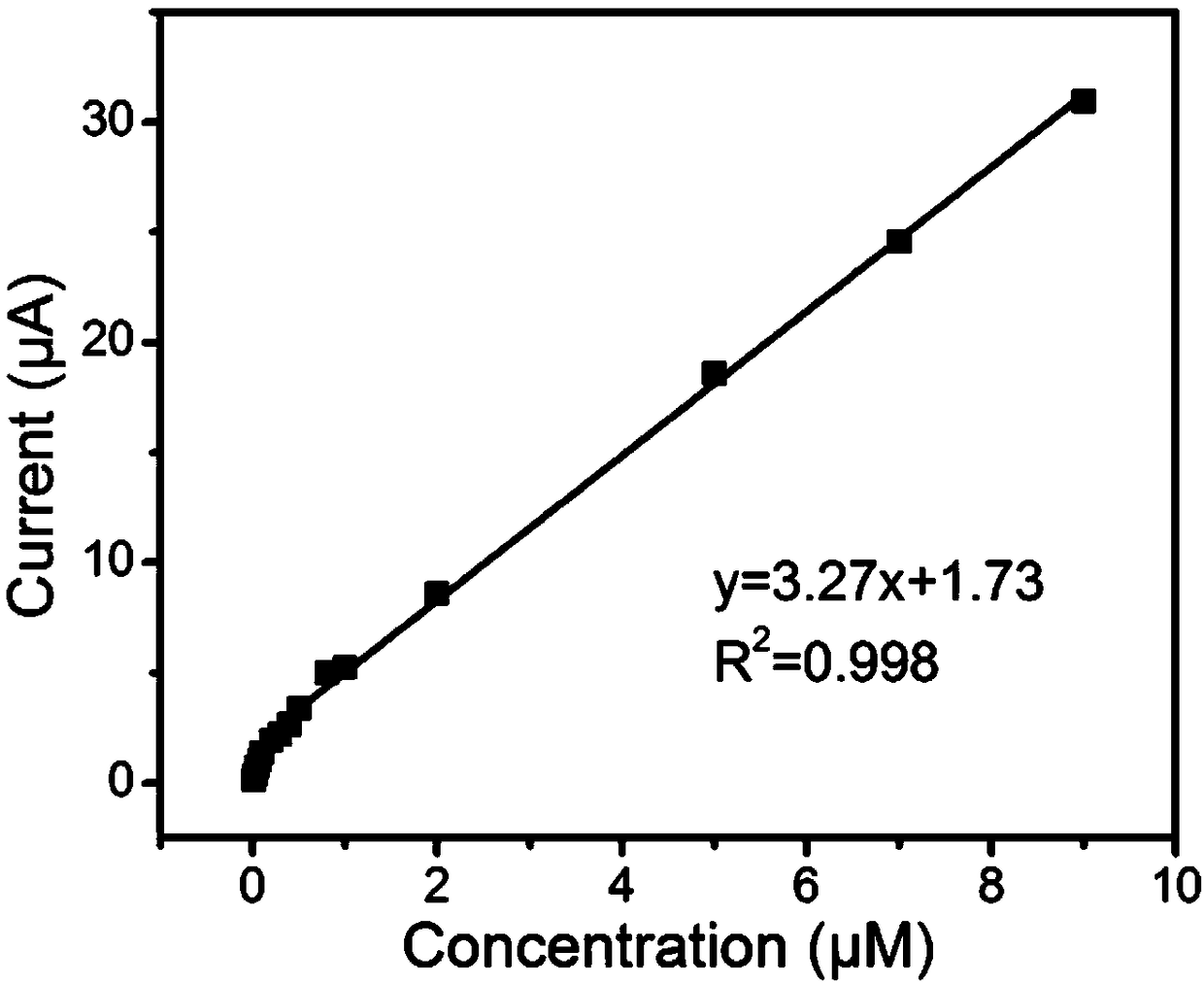Preparation method of electrochemical sensor for detecting 2,4,6-trichlorophenol and analysis method
A trichlorophenol and electrochemical technology is applied in the field of preparation of electrochemical sensors, which can solve the problems of difficulty in meeting detection requirements, poor stability of natural enzymes, and being easily affected by the environment, and achieves improved fixed amount, low cost, and high sensitivity. Effect
- Summary
- Abstract
- Description
- Claims
- Application Information
AI Technical Summary
Problems solved by technology
Method used
Image
Examples
Embodiment 1
[0031] Preparation of Cu-MOF-74 crystals: Weigh 0.13g of 2,5-dihydroxyterephthalic acid and 0.33g of copper nitrate trihydrate and dissolve them in 20mL of N,N-dimethylformamide, and ultrasonically dissolve them fully for 5min A clear bright green solution was obtained, then 1 mL of isopropanol was added, and mixed evenly to obtain a mixed solution. The mixed solution was placed in a 50 mL reaction kettle, and the temperature was raised to 80° C. for 18 hours in a vacuum environment. The reaction formula is as follows:
[0032]
[0033] After the reaction, it was naturally cooled to room temperature to obtain reddish needle-like Cu-MOF-74 crystals, which were washed several times with DMF to remove unreacted copper nitrate and 2,5-dihydroxyterephthalic acid. Soak the Cu-MOF-74 crystals in 100 mL of absolute ethanol for 4 days, replace the ethanol solution every 24 hours, then dry the Cu-MOF-74 crystals in a vacuum environment at 150 °C for 5 hours and store them in an iner...
PUM
| Property | Measurement | Unit |
|---|---|---|
| diameter | aaaaa | aaaaa |
Abstract
Description
Claims
Application Information
 Login to View More
Login to View More - R&D
- Intellectual Property
- Life Sciences
- Materials
- Tech Scout
- Unparalleled Data Quality
- Higher Quality Content
- 60% Fewer Hallucinations
Browse by: Latest US Patents, China's latest patents, Technical Efficacy Thesaurus, Application Domain, Technology Topic, Popular Technical Reports.
© 2025 PatSnap. All rights reserved.Legal|Privacy policy|Modern Slavery Act Transparency Statement|Sitemap|About US| Contact US: help@patsnap.com



